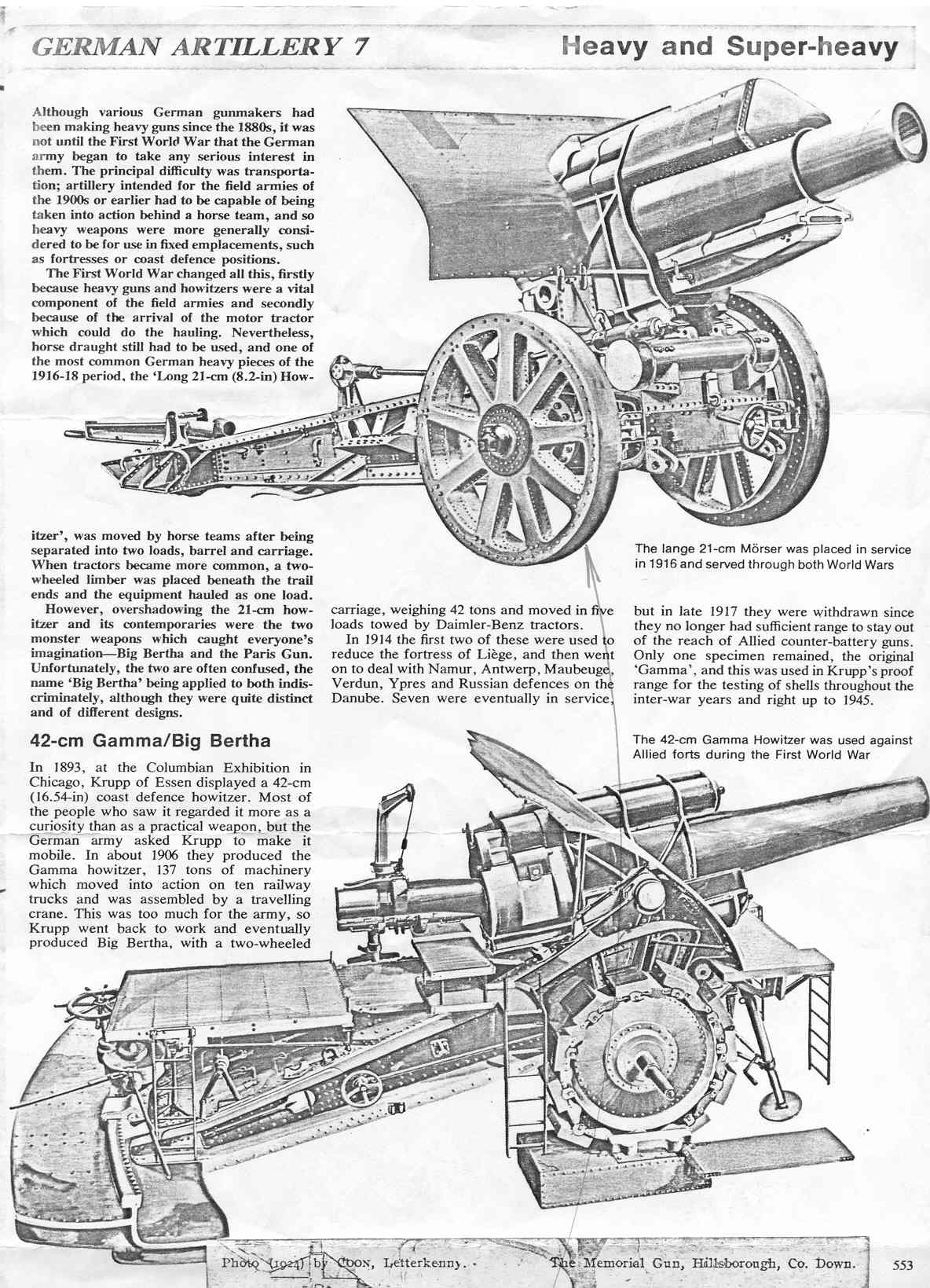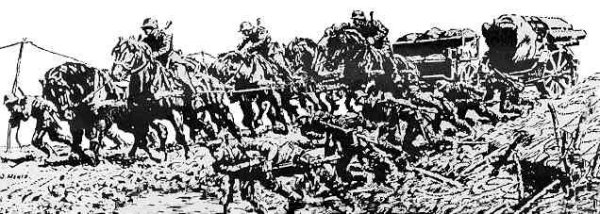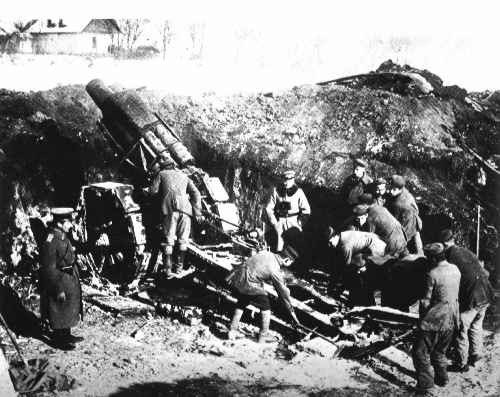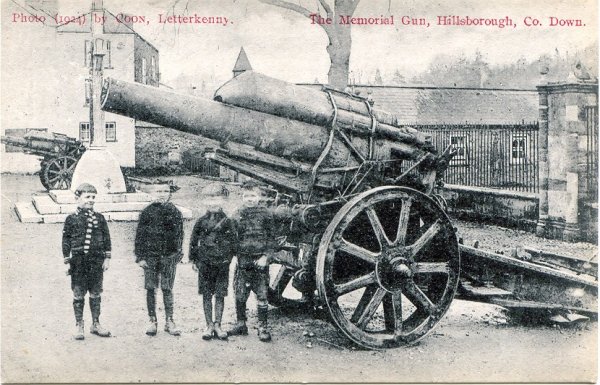The Memorial. Gun, Hillsborough, Co. Down.
Photo 1924 by Coon Letterkenny. - The Memorial. Gun, Hillsborough, Co. Down.
GERMAN ARTILLERY 7 Heavy and Super-heavy

Although various German gun makers had been making heavy, guns since the 1880s, it was not until the First World War that the German army began to take any serious interest in them. The principal difficulty was transportation; artillery intended for the field armies of the 1900s or earlier had to be capable of being taken into action behind a horse team, and so heavy weapons were more generally considered to be for use in fixed emplacements, such as fortresses or coast defence positions.
The First World War changed all this, firstly because heavy guns and howitzers were a vital component of the field armies and secondly because of the arrival of the motor tractor which could do the hauling. Nevertheless, horse draught still had to be used, and one of the most common German heavy pieces of the 1916-18 period, the `Lung 21-cm (8.2-in) Howitzer', was moved by horse teams after being separated into two loads, barred and carriage. When tractors became more common, a two-wheeled limber was placed beneath the trail ends and the equipment hauled as one load.
However, overshadowing the 21-cm howitzer and its contemporaries were the two monster weapons which caught everyone's imagination-Big Bertha and the Paris Gun. Unfortunately, the two are often confused, the name 'Big Bertha' being applied to both indiscriminately, although they were quite distinct and of different designs.
In 1893, at the Columbian Exhibition in Chicago, Krupp of Essen displayed a 42-cm (16.54-in) coast defence howitzer. Most of the people who saw it regarded it more asa curiosity than as a practical weapon. but the German army asked Krupp to make it mobile. In about 1906 they produced the Gamma howitzer, 137 tons of machinery which moved into action on ten railway trucks and was assembled by a travelling crane.
This was too much for the army, so Krupp went back to work and eventually produced Big Bertha, with a two-wheeled carriage, weighing 42 tons and moved in five loads towed by Daimler-Benz tractors.
In 1914 the first two of these were used to reduce the fortress of Liege, and then went on to deal with Namur, Antwerp, Maubeuge, Verdun, Ypres and Russian defences on the Danube. Seven were eventually in service,
The large 21-cm Mörser was placed in service in 1916 and served through both World Wars but in late 1917 they were withdrawn since they no longer had sufficient range to stay out of the reach of Allied counter-battery guns. Only one specimen remained, the original 'Gamma', and this was used in Krupp's proof range for the testing of shells throughout the inter-war years and right up to 1945.
42-cm Gamma/Big Bertha
The 42-cm Gamma Howitzer was used against Allied forts during the First World War
The large 21-cm Mörser was placed in service in 1916 and served through both World Wars

German Artillery

20/02/2009

